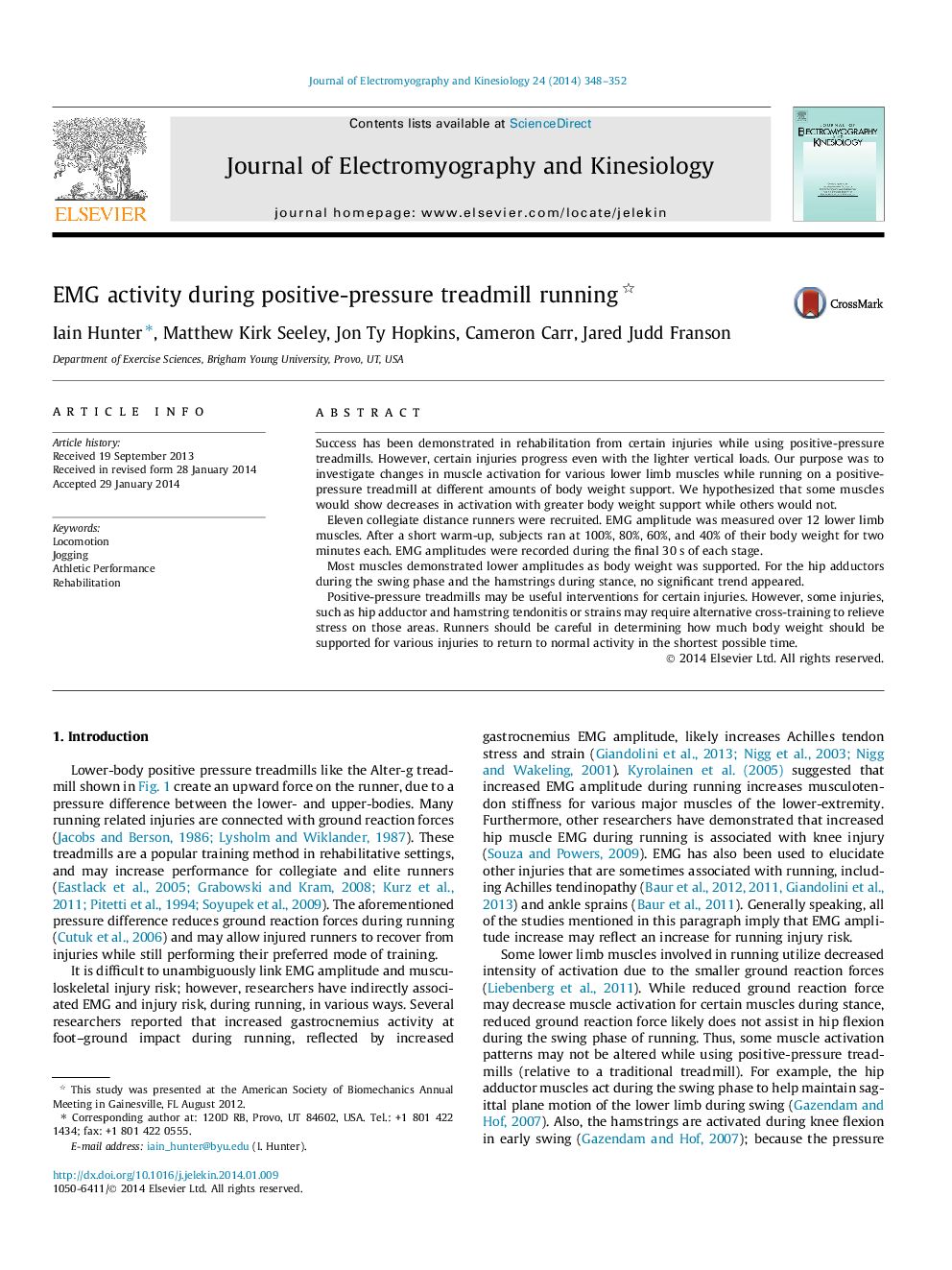| Article ID | Journal | Published Year | Pages | File Type |
|---|---|---|---|---|
| 6210484 | Journal of Electromyography and Kinesiology | 2014 | 5 Pages |
Success has been demonstrated in rehabilitation from certain injuries while using positive-pressure treadmills. However, certain injuries progress even with the lighter vertical loads. Our purpose was to investigate changes in muscle activation for various lower limb muscles while running on a positive-pressure treadmill at different amounts of body weight support. We hypothesized that some muscles would show decreases in activation with greater body weight support while others would not.Eleven collegiate distance runners were recruited. EMG amplitude was measured over 12 lower limb muscles. After a short warm-up, subjects ran at 100%, 80%, 60%, and 40% of their body weight for two minutes each. EMG amplitudes were recorded during the final 30Â s of each stage.Most muscles demonstrated lower amplitudes as body weight was supported. For the hip adductors during the swing phase and the hamstrings during stance, no significant trend appeared.Positive-pressure treadmills may be useful interventions for certain injuries. However, some injuries, such as hip adductor and hamstring tendonitis or strains may require alternative cross-training to relieve stress on those areas. Runners should be careful in determining how much body weight should be supported for various injuries to return to normal activity in the shortest possible time.
